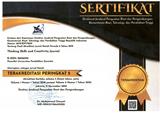Anti-Realism Doesn't Dissolve by Realism: A Study of Epistemological Aspects, Methods of Constructing Modern Physics Knowledge on the Dualism of Light
DOI:
https://doi.org/10.23887/jfi.v6i3.55355Keywords:
realisme, antirealisme, epistemology, modern physics, light dualismAbstract
This article aims to provide insight into epistemology for how to construct new knowledge based on the views of realism and anti-realism in one of the modern physical theories of dualism of light. This article presents views on the theory of dualism of light starting from the epistemology of light, light as a wave, light as a particle and light dualism. The method used in this study is a critical literature review, which is a type of critical review to analyze and evaluate many sources on the topic of modern physics, especially dualism of light and its epistemological philosophy to construct knowledge of dualism of light, a comparison of realism versus antirealism about the dualism of light. The result is that in constructing new knowledge, the view of anti-realism does not necessarily fall away and produces a new view of realism. It can be seen from the dualism of light, in constructing knowledge, the anti-realist view with its theory (classical physics) is not necessarily wrong and fails when there is a new theory from the view of realism (modern physics). even from this case, philosophically the theory that is formed from the views or facts of empirical results forms new facts and the theory applies the power of theory as a bridge.
References
Einstein. (1905). Generation and Transformation of Light. Annalen der Physik, 17.
Bohr, N. (1934). Atomic Physics and the Description of Nature. Cambridge University Press.
Bridgman, P. (1927). The Logic of Modern Physics. The Macmillan Company.
Chan, T. (2010). Moore’s Paradox is Not Just Another Pragmatic Paradox. Synthese, 173 (3): 211-229.
Duhem, P. (1914/1982). The Aim and Structure of Physical Theory. Princeton University Press.
Firman, H. (2019). Pengantar Filsafat Ilmu Pengetahuan Alam. Sekolah Pasca Sarjana Universitas Pendidikan Indonesia.
Haris, A. (2022). Filsafat Ilmu. Perkumpulan Rumah Cemerlang Indonesia.
Knox, E., & Wilson, A. (Eds.). (2022). The Routledge Companion to Philosophy of Physics. Routledge.
Kuhn, Thomas S. (1957). The Copernican Revolution: Planetary Astronomy in the Development of Western Thought. Harvard University Press.
Laudan, Larry (1977). Progress and Its Problems: Towards a Theory of Scientific Growth. University of California Press.
M. Planck, “Distribution of energy in the normal spectrum”, Verhandlungen der Deutschen Physikalischen Gesellschaft, vol. 2, pp. 237-245, 1900.
Moore, T. A. (2003). Six Ideas That Shaped Physics Unit E.R.Q. MC Graw-Hill.
Paré, G., & Kitsiou, S. (2017). Methods for Literature Reviews. In Handbook of eHealth Evaluation: An Evidence-based Approach. University of Victoria.
Park, S. (2016). Scientific Realism and Antirealism in Science Education Coactivity: Philosophy. Communication, 24 (1): 72-81.
Purwati, A. dkk. 2023. Pentingnya Kajian Futuristik: Pengujian Rekonstruksi Teori Baru Menuju Transdisipliner. Bali. Jurnal Filsafat Indonesia, 6(1).
R. P. Feynman. (1985). QED: The Strange Theory of Light and Matter. Saputra, M. R. A., & Budianto, H. (2022). Teori dan Praktik Menyusun Karya Ilmiah: Bahan Ajar MA Riset. Nizamia Learning Center.
Snyder, H. (2019). Literature Review as a Research Methodology: An Overview and Guidelines. Journal of Business Research, 104, 333-339.
Stanford, P. K. (2006). Exceeding Our Grasp: Science, History, and the Problem of Unconceived Alternatives. Oxford University Press.
Susanto, A. (2021). Filsafat ilmu: Suatu Kajian dalam Dimensi Ontologis, Epistemologis, dan Aksiologis. Bumi Aksara.
Downloads
Published
Issue
Section
License
Copyright (c) 2023 Jurnal Filsafat Indonesia

This work is licensed under a Creative Commons Attribution-ShareAlike 4.0 International License.

Jurnal Filsafat Indonesia Undiksha is licensed under a Creative Commons Attribution-ShareAlike 4.0 International License.




